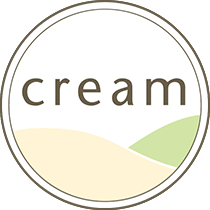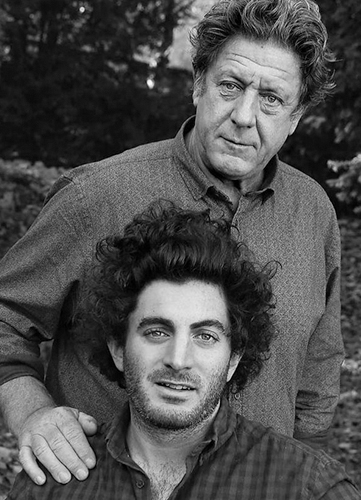Champagne Jacques Selosse
VISIT THIS PRODUCER'S WEBSITE
LOCATE ON GOOGLE MAPS
VISIT IMPORTER'S WEBSITE
Country of Origin: France
Location: Avize, Côte des Blancs
People: Selosse Family, Owners | Guillaume Selosse, Winemakers
Viticulture: Practicing Organic
Items
Media Links
Vinography: Drinking Time Itself: The Champagnes of Anselme Selosse
The New York Times: Taking Champagne Back to Its Roots
The Times Weekly: The Terrorist Manifesto of Anselme Selosse
Champagne Tasting: Jacques Selosse - La Cote Faron
Rare Wine Co Blog: Jacques Selosse: Out of the Wilderness
Sharon's Wine Blog: Jacques Selosse Champagne: a four-alarm fire for the senses
One Brilliant Bottle: Domaine Jacques Selosse
Social Media
Instagram: @domainejacquesselosse, @guillaume_selosse
Every decade or so, a winemaker comes along who, through the force of his ideas, and the brilliance of his work, has the power to change the course of wine history. Anselme Selosse is such an individual—and the man most responsible for the revolution that's changing Champagne for the better. Since taking over Champagne Jacques Selosse in 1980, Anselme has used the uncompromising intensity of his wines—as well as no small amount of charisma—to challenge Champagne's old definitions for excellence. If ten or twenty years from now, small, quality-driven growers have finally taken their share of the power—and the big houses have fully embraced the ideas of low yields, chemical-free vineyards and terroir-driven wines—Anselme will deserve much of the credit.
Anselme came of age in the 1970s, a time when the Champagne industry was famously, and pervasively, indifferent to fruit quality. A few big producers called the shots, and small growers wielded little power. Nowhere else in France were "brands" so dominant, with fruit bought and sold as a commodity, and with the town of origin as a the sole determinant of price. In this system, growers had no incentive for lower yields, or labor-intensive organic viticulture, and vineyard work generally was abysmal.
It took a different perspective to understand what was wrong, and Anselme was the man to provide it. He had studied oenology not in Champagne, but in Burgundy, where he was introduced to such greats as Coche-Dury, Lafon and Leflaive. There he also learned the kind of commitment needed to produce profound, individualistic wines from great terroirs. In 1974, Anselme completed his studies and began to develop his ideas at his father's estate, centered in Avize on the Côte de Blancs. Six years later the domaine became his, and he threw himself into radical change, dramatically reducing yields and farming organically. Working with his wife Corinne, he adopted ideas that were starting to become accepted in other parts of France but were still considered heretical by Champagne's establishment.
Perhaps Anselme's most important insight was that to make profound Champagne, you must start with a great wine for the base. Fortunately for him, he was blessed with spectacular grand cru vineyard holdings in Avize, Cramant, and Oger. In fact, while much has been made of his winemaking methods, Anselme's emphasis on viticulture and terroir may have been his greatest advance. He is one of the world's most profound thinkers about the relationship between healthy soils and the wines that spring from them. With low yields and fastidious viticulture, he is able to harvest fruit that is not only Champagne's most physiologically ripe, but also its most expressive.
In the winery, Selosse defies convention by using only indigenous yeasts for fermentations and by minimizing the use of SO2. He ferments and raises his wines in wood barrels (less than 20% new) and leaves them on their fine lees for extended periods. Such techniques may explain why his wines have such towering quality, but they cannot explain why no one else has been able to duplicate the elusive "Selosse" flavor profile or the remarkable texture his wines exhibit. This is surely a tribute to the man, as well as to his viticulture.
Anselme's questing intelligence has been testing Champagne's limits for more than 25 years. This profound body of knowledge must account for some of the Selosse magic. Note: Many commentators have called Selosse's wines "Burgundy with bubbles," and, like Burgundy, the wines benefit from extended cellaring and/or aeration before serving, and they should not be served too cold.
Guillaume Selosse has now taken the helm at Champagne Jacques Selosse with the official retirement of his father, Anselme.
Vinous 7/2019
"This is a positively stunning set of wines from Anselme and Guillaume Selosse. I have a hard time thinking about another tasting here in which so many wines were at such a stratospheric level. For starters, the Initiale, Version Originale (V.O.) and Rosé are all elevated by the quality of the 2013 vintage on which they are based. The 2012 lieux-dits capture all of the intensity and richness of the year, while the 2007 Vintage marks a transition to Guillaume Selosse’s stewardship. I can’t say much except to reiterate just how compelling and utterly singular these Champagnes are."
Vinous article "Selosse – Lieux-Dits Dinner at NoMad" by Antonio Galloni on July 11, 2017
"Because interest in grower Champagne is so strong today, it is sometimes easy to forget that Anselme Selosse has represented the cutting edge in the region for several decades. Selosse pioneered concepts that today are considered standard by many young producers, including sustainable farming, attention to yields, harvesting at full ripeness and minimal handling in the cellar. Along the way, Selosse has inspired and/or mentored many of today’s leading younger producers. More recently, Selosse has begun to pass the torch onto his son, Guillaume, who seems very much prepared to take the family domaine into the next generation.
Selosse’s lieu-dit, or single-parcel, Champagnes are an expression of a belief that site is the single most important variable in wine quality. In the mid-1990s, Anselme Selosse began putting this theory to test with Contraste, a 100% Blanc de Noirs from La Côte Faron in Aÿ done with a perpetual reserve method in which the base vintage is blended with a reserve that includes all previous vintages. In the mid 2000s, Selosse expanded that concept to six lieu-dit Champagnes that are available together only in a limited-edition release of about 300 boxed sets. The lieux-dits collection is composed of three Chardonnays (Cramant Chemin de Chalons, Les Mesnil Sur Oger Les Carelles and Avize Les Chantereines) and three Pinot Noirs (Mareuil sur Aÿ Sous Le Mont, Aÿ La Côte Faron and Ambonnay La Bout du Clos, which is in reality a 80% Pinot/20% Chardonnay blend)."

